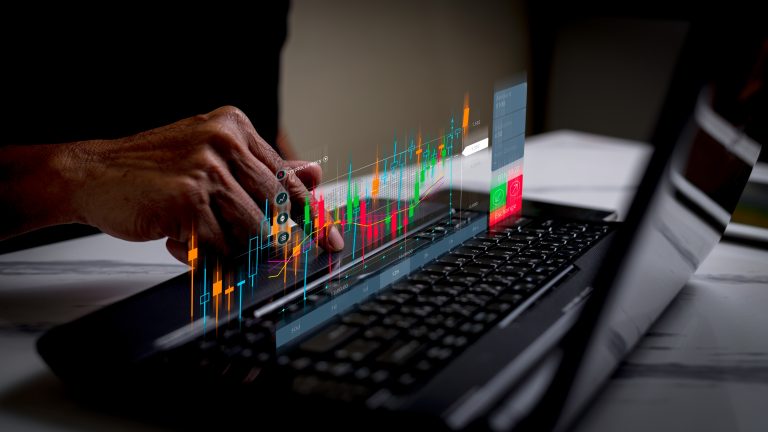Swing trading is a popular strategy in financial markets that focuses on capturing short-to-medium-term price movements. At the core of this approach lies technical analysis, a method used to evaluate price patterns, trends, and market momentum. By leveraging charts and indicators, traders aim to make informed decisions, maximising profits while managing risks effectively.
In this article, we’ll delve into the importance of technical analysis in swing trading strategies.
Understanding Technical Analysis
Technical analysis is an essential tool for traders looking to optimise their swing trade strategies. This approach involves studying historical price data, chart patterns, and key indicators to anticipate future market movements. By analysing support and resistance levels, candlestick patterns, and oscillators such as the Relative Strength Index (RSI) or Moving Average Convergence Divergence (MACD), traders can identify entry and exit points for potential swing trades.
The goal of using technical analysis in swing trading is to capitalise on price fluctuations within a defined time frame, ensuring trades align with overall market trends. Through consistent analysis, traders improve their ability to react to market signals and increase the likelihood of executing successful swing trades.
The Role of Technical Analysis in Swing Trading Strategies
Technical analysis plays a crucial role in swing trading strategies, helping traders identify potential opportunities and manage risk effectively. Here are some key ways technical analysis supports successful swing trading strategies:
- Identifying market trends: By studying price charts and using trend lines, traders can determine the overall direction of the market to guide their trades. This helps traders avoid placing trades against the prevailing trend, increasing their chances of success.
- Pinpointing entry and exit points: Through technical analysis, traders can identify areas of support and resistance on price charts to determine optimal entry and exit levels for their trades. This allows them to enter positions at favourable prices while minimising potential losses.
- Understanding market psychology: Technical analysis also takes into account the human emotions that drive market movements. By analysing chart patterns and key indicators, traders can gain insights into investor sentiment and anticipate future price movements.
- Managing risk: Swing trading involves holding positions for a period of days or weeks, which increases the risk of market fluctuations. Technical analysis helps traders manage this risk by setting stop-loss levels based on support and resistance levels or using trailing stops to protect profits.
- Combining with fundamental analysis: While technical analysis focuses on price data, fundamental analysis considers broader economic factors that may influence the market. By combining both approaches, swing traders can make more informed decisions and enhance their overall trading strategy.
- Evaluating trade performance: Technical analysis can also be used to assess the success of swing trades. By tracking key indicators and comparing them to entry and exit points, traders can identify patterns in their trades and make adjustments to improve future performance.
In addition to these benefits, technical analysis also offers a wide range of tools and techniques that can be tailored to individual trading styles and preferences.
Some popular methods include:
Trend-following indicators
- Moving averages: These indicators track the average price over a specific period of time, smoothing out short-term fluctuations and helping traders identify longer-term trends.
- Bollinger Bands: These bands use moving averages to calculate upper and lower limits for price movements, providing a visual representation of volatility and potential support/resistance levels.
- Ichimoku Cloud: This indicator combines several components, including moving averages and trend lines, to identify key price levels and generate buy/sell signals.
Momentum/Oscillator indicators
- Relative Strength Index (RSI): This oscillator compares the size of recent gains and losses to determine whether an asset is oversold or overbought.
- Stochastic Oscillator: This indicator uses the percentage change in closing prices over a set period of time to identify potential turning points in price trends.
- MACD (Moving Average Convergence Divergence): This popular indicator measures the distance between two moving averages and can be used to identify shifts in momentum and potential trend reversals.
To summarise, technical analysis offers a wide range of indicators and tools that can be used to identify patterns and make informed trading decisions. By understanding the strengths and weaknesses of each method, traders can develop their own unique approach to analysing the markets and improve their overall trading performance.


